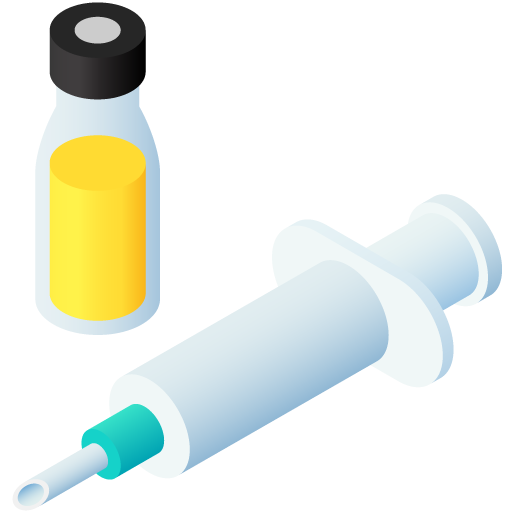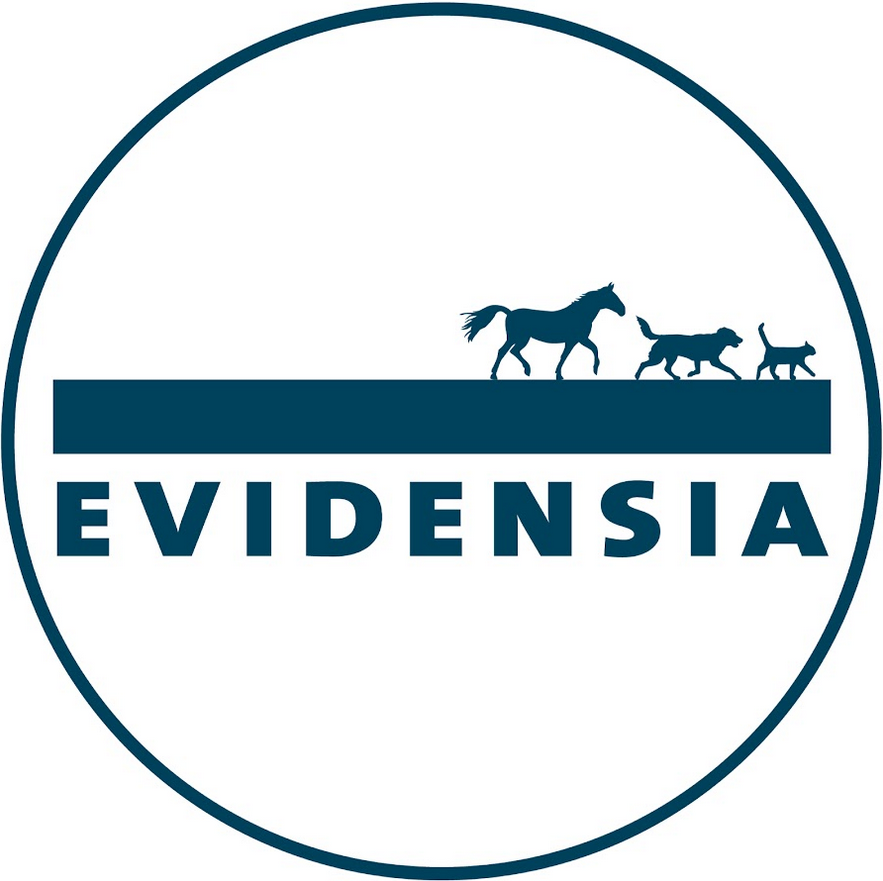Combination therapy
No results were found for your selected species
Bovilis IntraNasal RSP Live
Active substance
ATC code
Species
Cattle.
Indications
For active immunisation of calves from the day of birth onwards to reduce clinical signs of respiratory disease and viral shedding from infection with BRSV and PI3.
|
Onset of immunity: |
BRSV:
|
6 days (for calves vaccinated from the day of birth onwards)
5 days (for calves vaccinated from the age of 1 week onwards)
|
|
PI3: |
1 week. |
|
|
Duration of immunity: |
12 weeks. |
|
Dose to be administered and administration route
Nasal use.
Calves can be vaccinated from the day of birth onwards.
Reconstitute lyophilisate with solvent as described below. Ensure that the lyophilisate is completely reconstituted before use. The reconstituted vaccine is an orange/brown to off-pink or pink coloured suspension.
Administer a single dose of 2 ml reconstituted vaccine per animal in one nostril.
Instructions for reconstitution:
1 and 5 dose presentations
For proper reconstitution of the lyophilisate, transfer the solvent to the vial with the lyophilisate (2 ml for the 1 dose, 10 ml for the 5 dose; also see the table below) using a needle and syringe. The vacuum in the vaccine vial will allow quick emptying of the syringe. Then resuspend by shaking. The vaccine suspension can be drawn up in a syringe with a clean tip. The vaccine in the syringe is now ready for administration, directly from the tip of the syringe. A spraying device is not required.
10 and 20 dose presentations
For proper reconstitution of the lyophilisate, transfer 10 ml of the solvent to the vial with the lyophilisate using a needle and syringe. The vacuum in the vaccine vial will allow quick emptying of the syringe. Then resuspend by shaking. Completely draw up the vaccine suspension and transfer it back to the solvent vial in order to get the correct dose/volume ratio for the respective presentation (20 ml for the 10 dose, 40 ml for the 20 dose; also see the table below). The vaccine suspension can be drawn up in a syringe with a clean tip. The vaccine in the syringe is now ready for administration, directly from the tip of the syringe. A spraying device is not required.
When vaccinating animals, it is recommended to change syringes or tips of a multidose syringe between animals to avoid transmission of pathogens.
|
Doses per vial |
Solvent volume required |
dose volume |
|
1 |
2 ml |
2 ml |
|
5 |
10 ml |
2 ml |
|
10 |
20 ml |
2 ml |
|
20 |
40 ml |
2 ml |
Adverse reactions
Cattle:
|
Very common (>1 animal / 10 animals treated): |
Nasal discharge1. Elevated temperature2. |
|
Common (1 to 10 animals / 100 animals treated): |
Cough3, increased respiratory rate4. Ocular discharge5. |
1 Mild and transient. Occurs during two days following vaccination.
2 Minor and transient (very rarely up to 41.1 °C); normally resolves within four days.
3 Mild and transient. Normally resolves in three days.
4 Transient. Normally resolves within four days.
5 Mild and transient. Normally resolves in two days.
Reporting adverse events is important. It allows continuous safety monitoring of a veterinary medicinal product. Reports should be sent, preferably via a veterinarian, to either the marketing authorisation holder or its local representative or the national competent authority via the national reporting system. See the package leaflet for respective contact details.
Dispensing
POM-V - Prescription Only Medicine – VeterinarianSUMMARY OF PRODUCT CHARACTERISTICS
1. NAME OF THE VETERINARY MEDICINAL PRODUCT
Bovilis INtranasal RSP Live, nasal spray, lyophilisate and solvent for suspension for cattle
2. QUALITATIVE AND QUANTITATIVE COMPOSITION
Each dose of 2 ml contains:
Active substances:
Live bovine respiratory syncytial virus (BRSV), strain Jencine-2013: 5.0 – 7.0 log10
TCID50*
Live bovine parainfluenza virus type 3 (PI3), strain INT2-2013:4.8 – 7.3 log10 TCID50* *50% tissue culture infective dose
Excipients:
For the full list of excipients, see section 6.1.
3. PHARMACEUTICAL FORM
Nasal spray, lyophilisate and solvent for suspension
Lyophilisate: off-white or cream-coloured cake. Solvent: clear colourless solution.
4. CLINICAL PARTICULARS
4.1 Target species
Cattle
4.2 Indications for use, specifying the target species
For active immunisation of calves from the day of birth onwards to reduce clinical signs of respiratory disease and viral shedding from infection with BRSV and PI3.
|
Onset of immunity: BRSV: onwards) onwards) |
6 days (for calves vaccinated from the day of birth 5 days (for calves vaccinated from the age of 1 week |
|
PI3: |
1 week |
|
Duration of immunity: |
12 weeks |
4.3 Contraindications
None.
4.4 Special warnings for each target species
Vaccinate healthy animals only.
Animals should be preferably vaccinated at least 5 – 7 days before a period of stress or increased infection pressure.
The efficacy against BRSV may be reduced by presence of maternally derived antibodies.
4.5 Special precautions for use
Special precautions for use in animals
Vaccinated calves may excrete the vaccine strains up to 12 days following vaccination.
It is recommended to vaccinate all calves of the herd.
Special precautions to be taken by the person administering the veterinary medicinal product to animals
Not applicable.
4.6 Adverse reactions (frequency and seriousness)
A mild and transient nasal discharge may very commonly occur during two days following vaccination. Mild and transient spontaneous coughing may commonly occur which normally resolves in three days. A mild and transient ocular discharge may commonly occur which normally resolves in two days. A transient rise in respiration rate may commonly occur which normally resolves within four days. A transient minor rise in body temperature may very commonly occur following vaccination (very rarely up to 41.1 °C) which normally resolves within four days.
The frequency of adverse reactions is defined using the following convention:
- very common (more than 1 in 10 animals treated displaying adverse reaction(s))
- common (more than 1 but less than 10 animals in 100 animals treated)
- uncommon (more than 1 but less than 10 animals in 1,000 animals treated)
- rare (more than 1 but less than 10 animals in 10,000 animals treated)
- very rare (less than 1 animal in 10,000 animals treated, including isolated reports).
4.7 Use during pregnancy, lactation or lay
Do not use during pregnancy and lactation.
4.8 Interaction with other medicinal products and other forms of interaction
No information is available on the safety and efficacy of this vaccine when used with any other veterinary medicinal product. A decision to use this vaccine before or after any other veterinary medicinal product therefore needs to be made on a case by case basis.
4.9 Amounts to be administered and administration route
Nasal use.
Calves can be vaccinated from the day of birth onwards.
Reconstitute lyophilisate with solvent as described below. Ensure that the lyophilisate is completely reconstituted before use. The reconstituted vaccine is an off-pink or pink coloured suspension.
Administer a single dose of 2 ml reconstituted vaccine per animal, 1 ml in each nostril.
Instructions for reconstitution:
1, 5 and 10 dose presentations
For proper reconstitution of the lyophilisate, transfer the solvent to the vial with the lyophilisate (2 ml for the 1 dose, 10 ml for the 5 dose and 20 ml for the 10 dose; also see the table below) using a needle and syringe. The vacuum in the vaccine vial will allow quick emptying of the syringe. Then resuspend by shaking. The vaccine suspension can be drawn up in a syringe with a clean tip. The vaccine in the syringe is now ready for administration, directly from the tip of the syringe. A spraying device is not required.
20, 25 and 50 dose presentations
For proper reconstitution of the lyophilisate, transfer 20 ml of the solvent to the vial with the lyophilisate using a needle and syringe. The vacuum in the vaccine vial will allow quick emptying of the syringe. Then resuspend by shaking. Completely draw up the vaccine suspension and transfer it back to the solvent vial in order to get the correct dose/volume ratio for the respective presentation (40 ml for the 20 dose, 50 ml for the 25 dose and 100 ml for the 50 dose; also see the table below). The vaccine suspension can be drawn up in a syringe with a clean tip. The vaccine in the syringe is now ready for administration, directly from the tip of the syringe. A spraying device is not required.
When vaccinating animals, it is recommended to change syringes or tips of a multidose syringe between animals to avoid transmission of pathogens.
|
Doses per vial |
Solvent volume required |
dose volume |
|
1 |
2 ml |
2 ml |
|
5 |
10 ml |
2 ml |
|
10 20 25 50 |
20 ml 40 ml 50 ml 100 ml |
2 ml 2 ml 2 ml 2 ml |
4.10 Overdose (symptoms, emergency procedures, antidotes), if necessary
At 10-fold overdose, no other signs than those described under section 4.6 have been observed. In individual calves exposed to very high vaccine dosages (150-fold maximum dose) signs of moderate to severe respiratory disease have been observed.
4.11 Withdrawal period(s)
Zero days.
5. IMMUNOLOGICAL PROPERTIES
Pharmacotherapeutic group: Immunologicals for bovidae, live viral vaccines ATC vet code: QI02AD07
The vaccine stimulates active immunity against bovine respiratory syncytial virus and bovine parainfluenza type 3 virus.
The vaccine stimulates receptors and cytokines involved in anti-viral innate immune responses.
6. PHARMACEUTICAL PARTICULARS
6.1 List of excipients
Lyophilisate:
Basal B8 medium
Hydrolysed gelatine
Pancreatic digest of casein
Sorbitol
Disodium hydrogen phosphate dihydrate
Solvent:
Disodium hydrogen phosphate dihydrate
Potassium dihydrogen phosphate
Sodium chloride
Sucrose
Water for injections
6.2 Major incompatibilities
Do not mix with any other veterinary medicinal product, except the solvent supplied for use with the veterinary medicinal product.
6.3 Shelf life
Shelf life of the lyophilisate as packaged for sale: 2 years.
Shelf life of the solvent as packaged for sale (2 ml): 3 years.
Shelf life of the solvent as packaged for sale (10 ml, 20 ml, 40 ml, 50 ml, 100 ml): 5 years.
Shelf life after reconstitution according to directions: 6 hours.
6.4 Special precautions for storage
Lyophilisate:
Store in a refrigerator (2°C – 8°C). Do not freeze. Protect from light.
Solvent:
Store below 25°C if stored independently from the lyophilisate. Do not freeze.
6.5 Nature and composition of immediate packaging
Lyophilisate:
Type I glass vial of 1, 5, 10, 20, 25 or 50 doses closed with a halogenobutyl rubber stopper and aluminium cap.
Solvent:
Type I glass vial with 2 ml Unisolve and Type II glass vial with 10 ml, 20 ml, 40 ml, 50 ml or 100 ml Unisolve closed with a halogenobutyl rubber stopper and aluminium cap.
Pack sizes:
Cardboard box with:
- 1 dose of lyophilisate + 2 ml of solvent
- 5 doses of lyophilisate + 10 ml of solvent
- 10 doses of lyophilisate + 20 ml of solvent
- 5 x 1 dose of lyophilisate + 5 x 2 ml of solvent
- 5 x 5 doses of lyophilisate + 5 x 10 ml of solvent
- 5 x 10 doses of lyophilisate + 5 x 20 ml of solvent
- Cardboard box with 20 doses of lyophilisate + cardboard box with 40 ml of solvent
- Cardboard box with 25 doses of lyophilisate + cardboard box with 50 ml of solvent- Cardboard box with 50 doses of lyophilisate + cardboard box with 100 ml of solvent
Not all pack sizes may be marketed.
6.6 Special precautions for the disposal of unused veterinary medicinal product or waste materials derived from the use of such products
Any unused veterinary medicinal product or waste materials derived from such veterinary medicinal product should be disposed of in accordance with local requirements.
7. MARKETING AUTHORISATION HOLDER
MSD Animal Health UK Limited
Walton Manor, Walton
Milton Keynes
Buckinghamshire
MK7 7AJ
8. MARKETING AUTHORISATION NUMBER
Vm 01708/5104
9. DATE OF FIRST AUTHORISATION
20 June 2019
10. DATE OF REVISION OF THE TEXT
June 2023

Approved: 15 June 2023
 TRUSTED SOURCE
TRUSTED SOURCE









